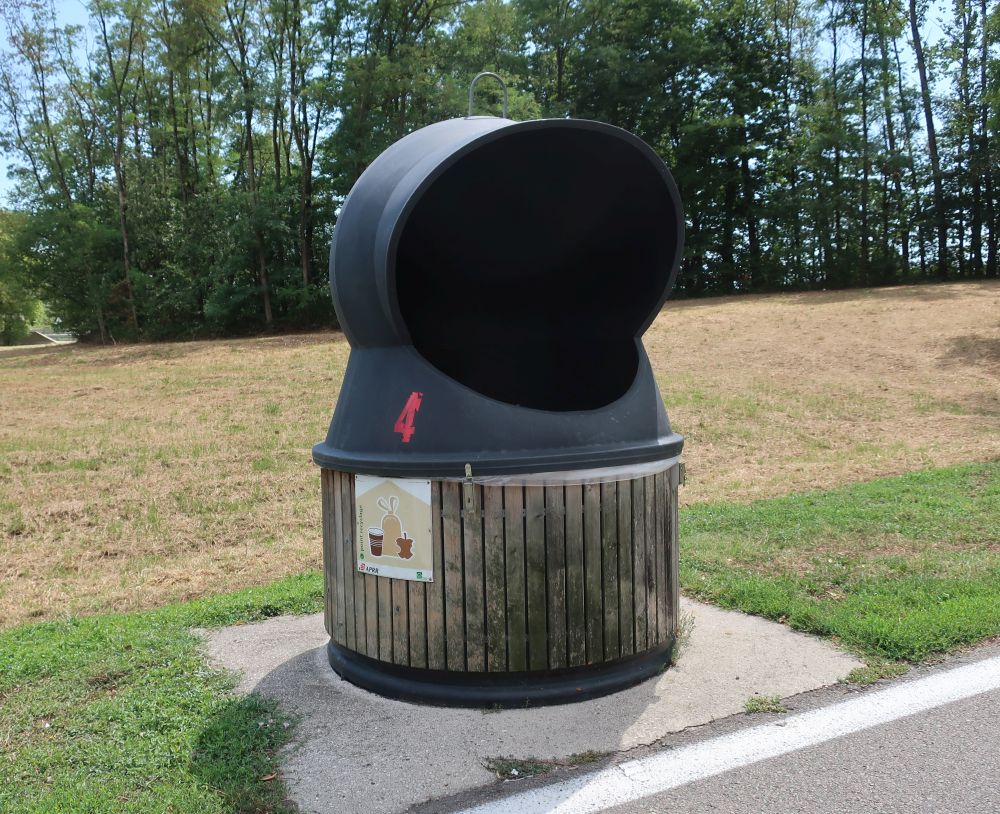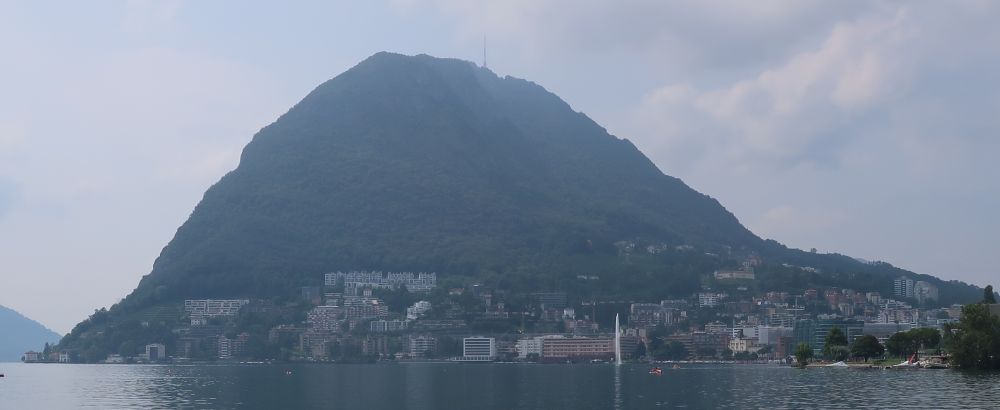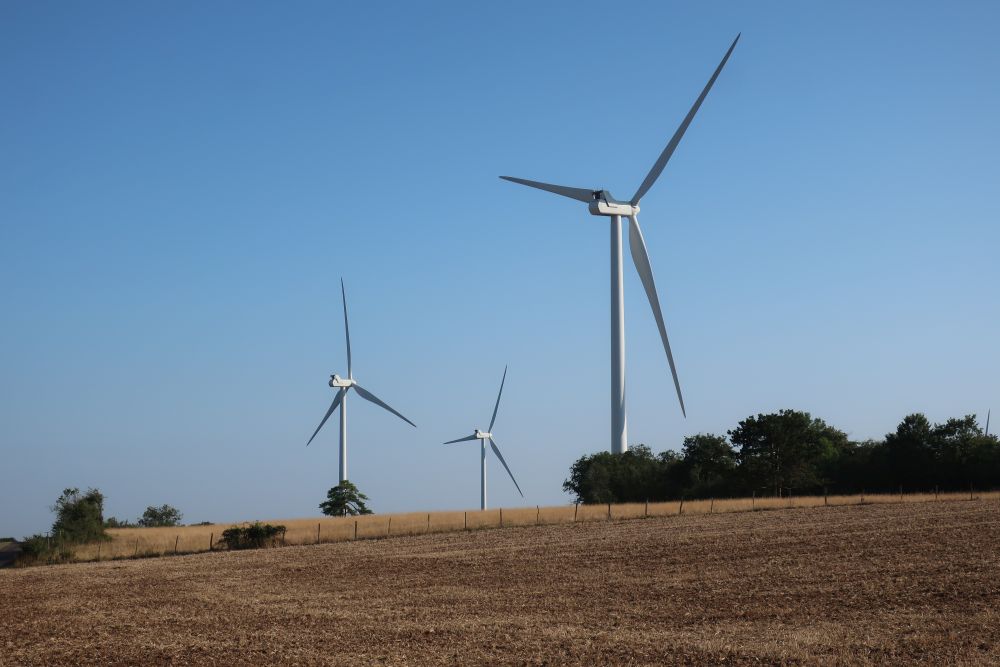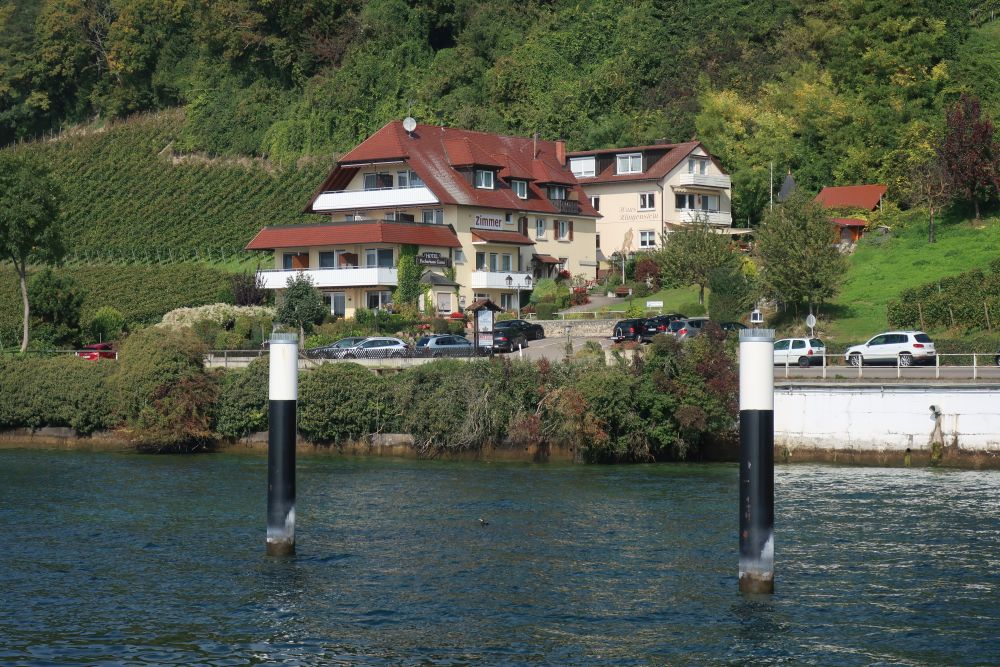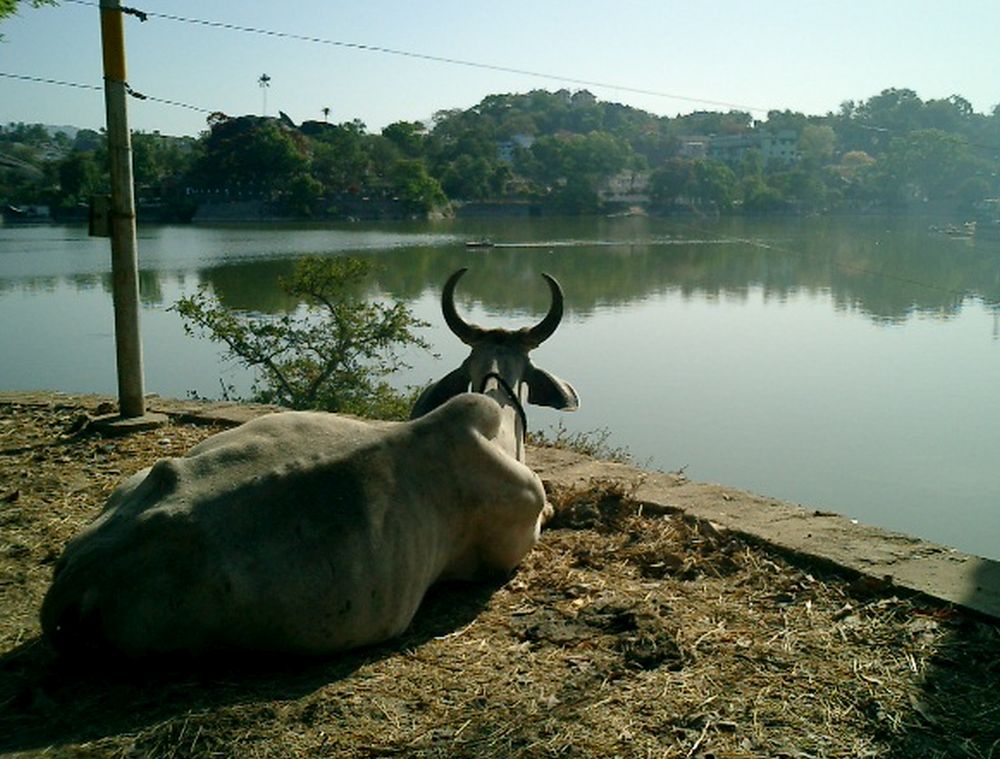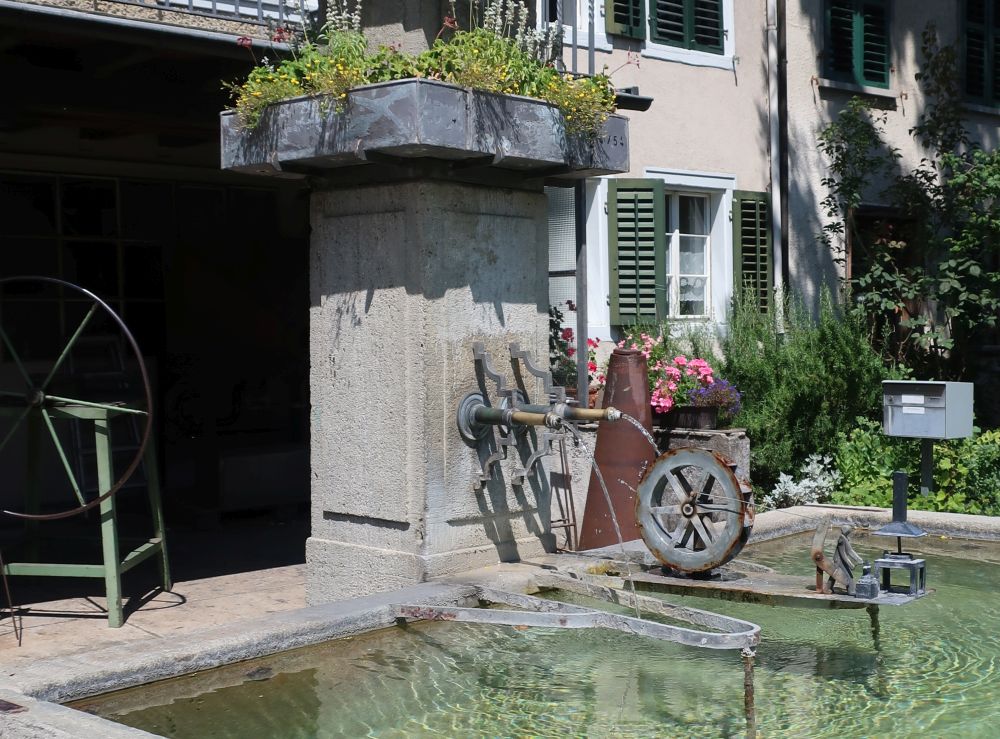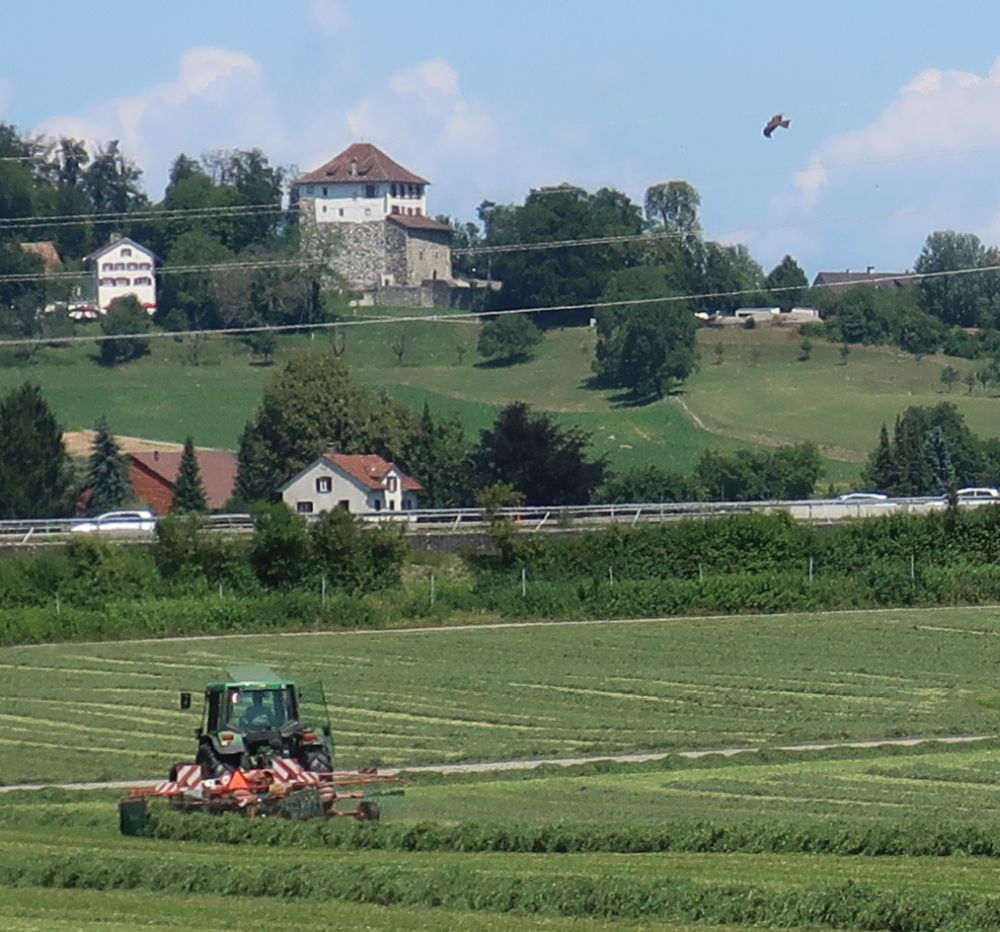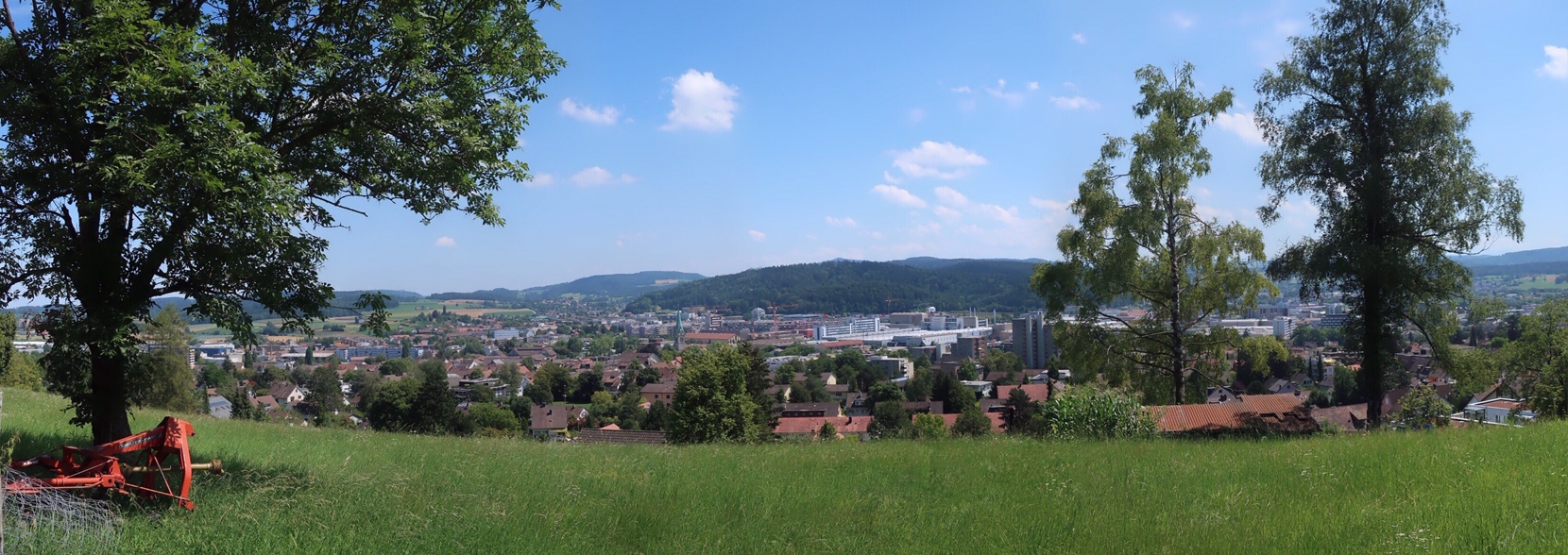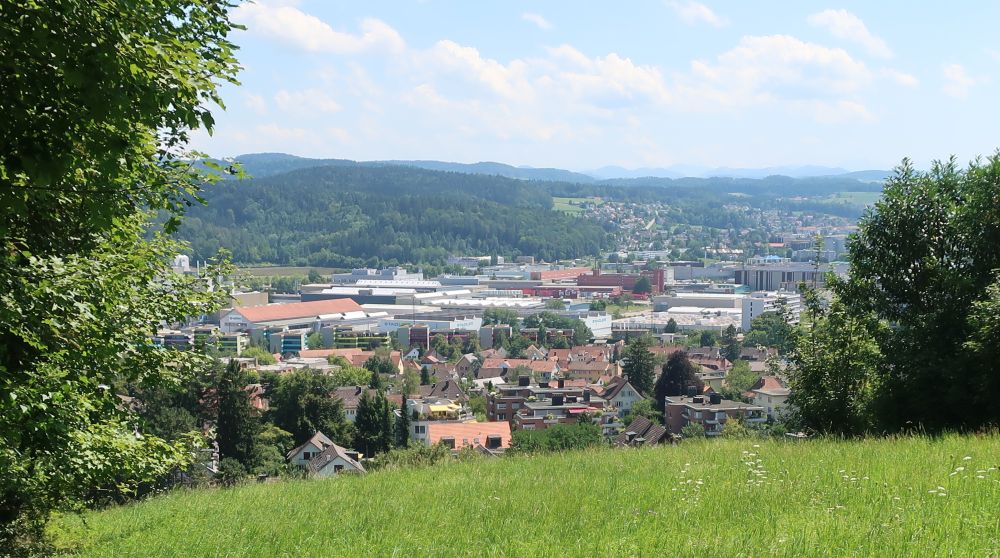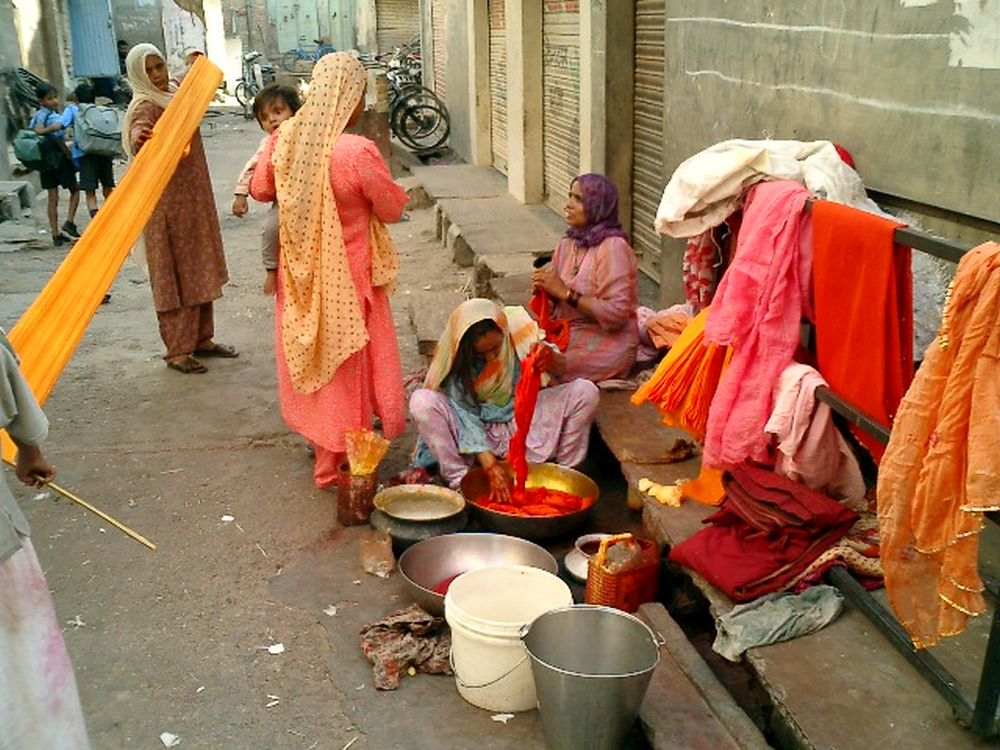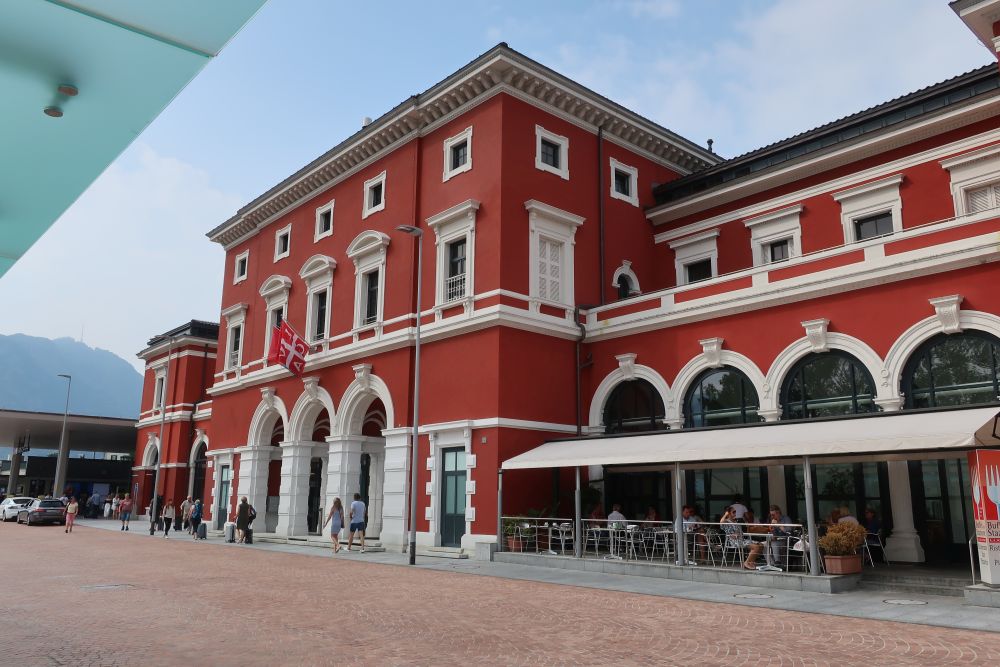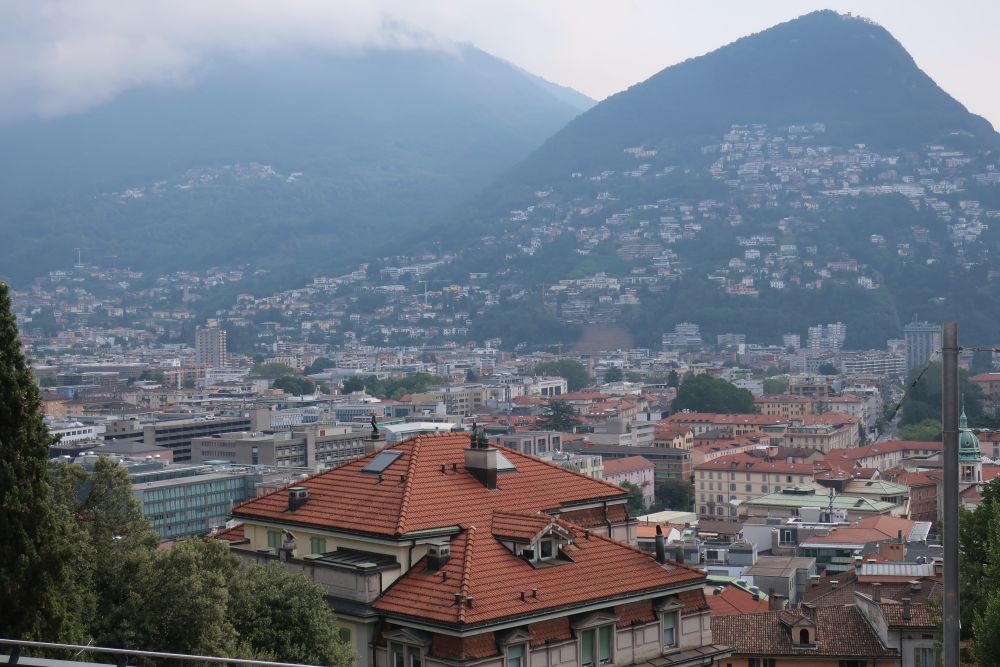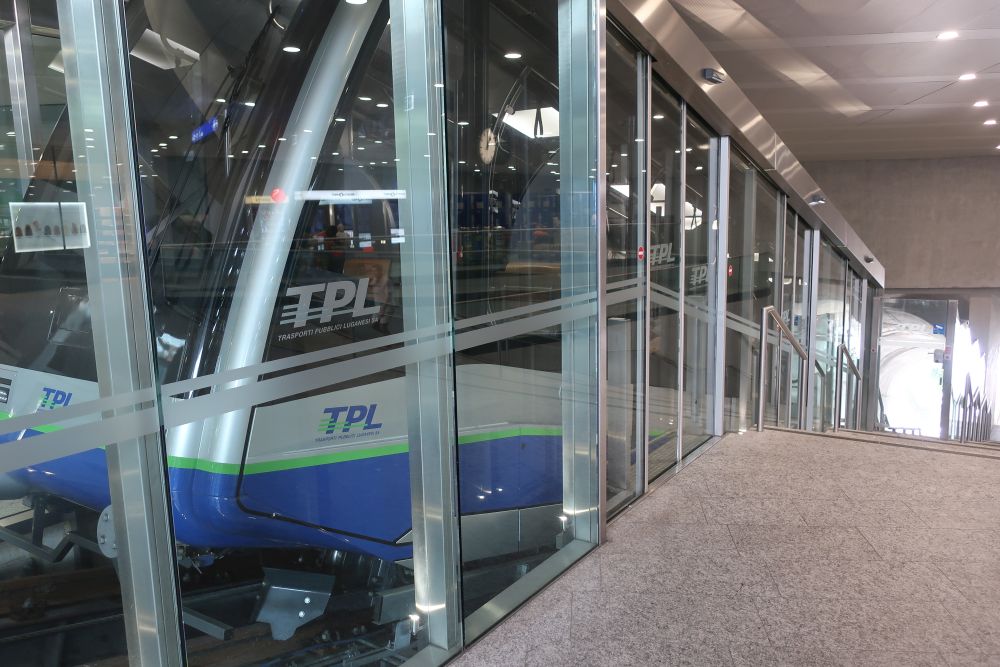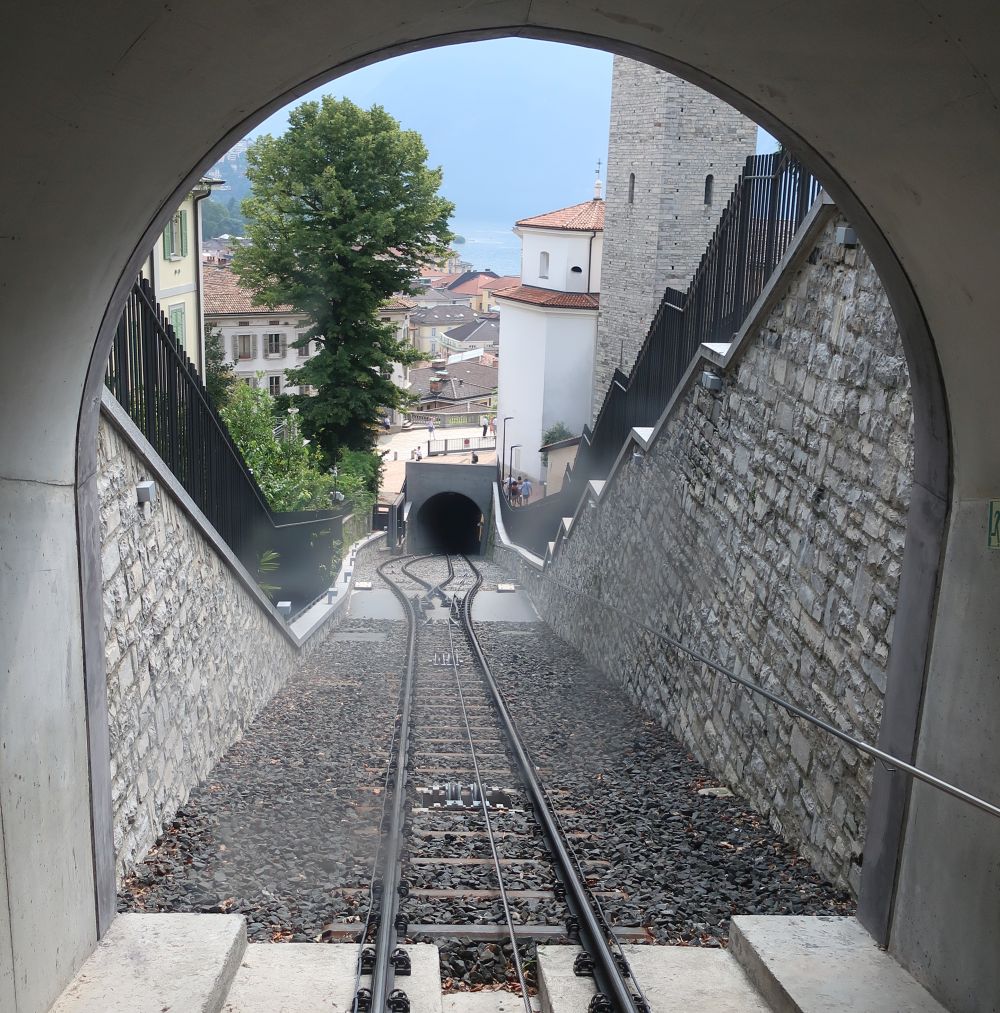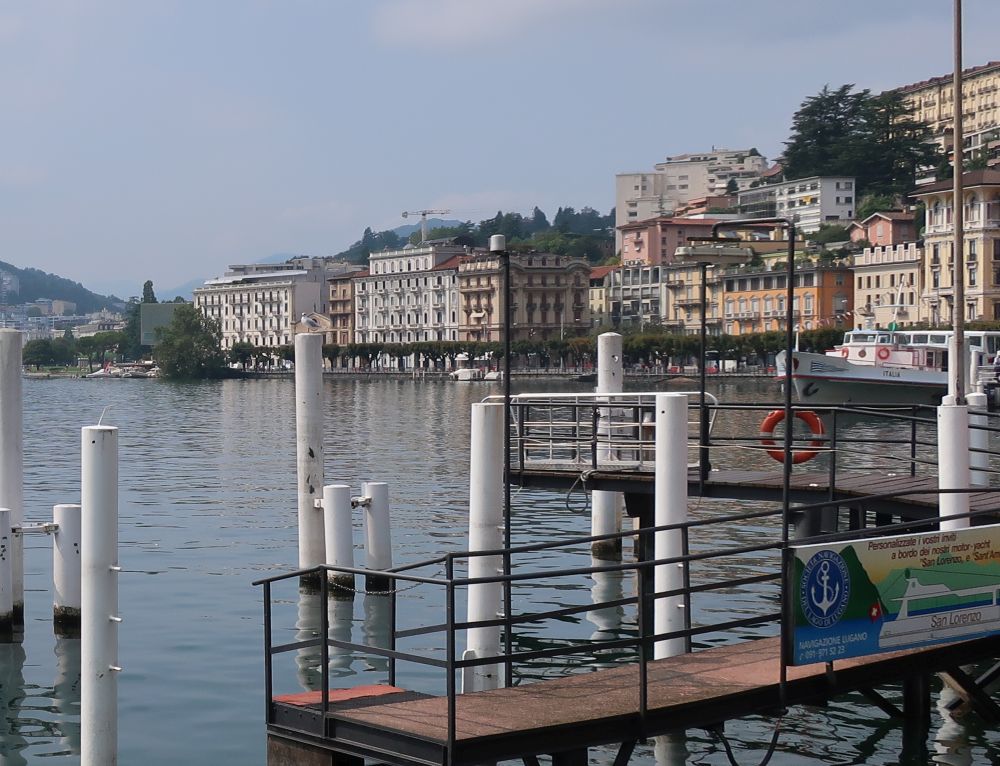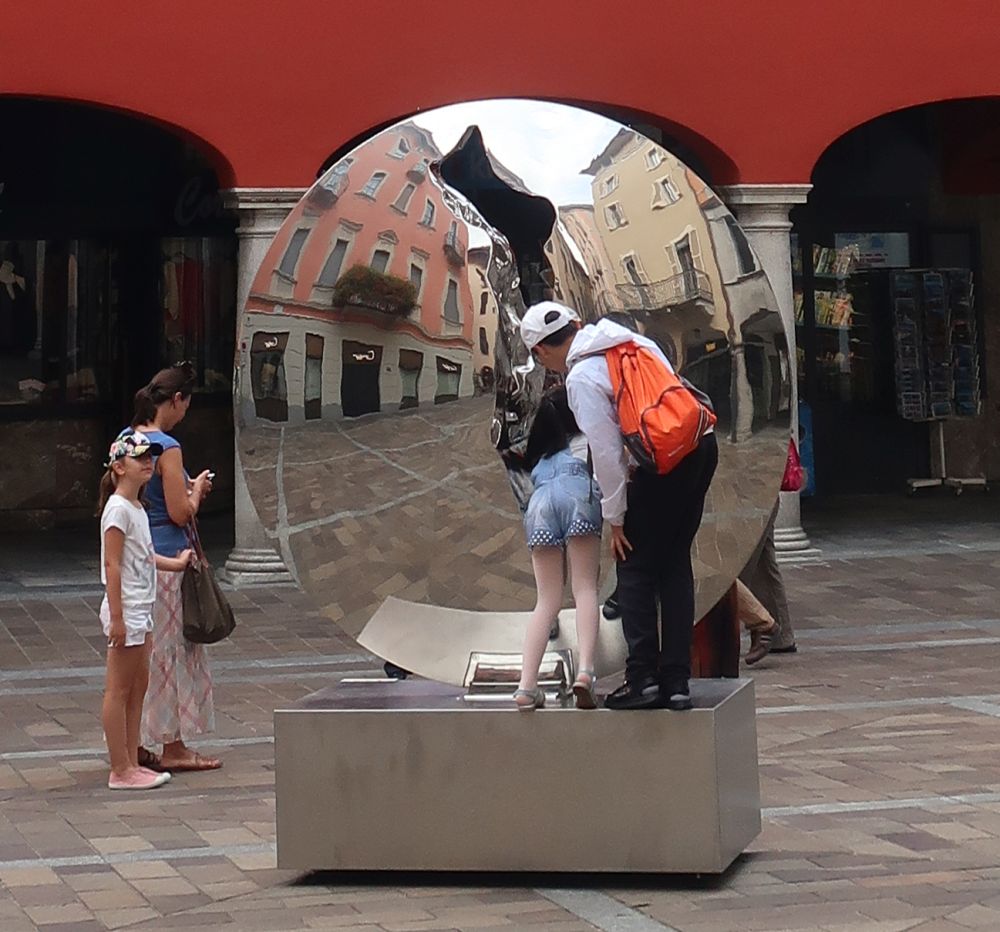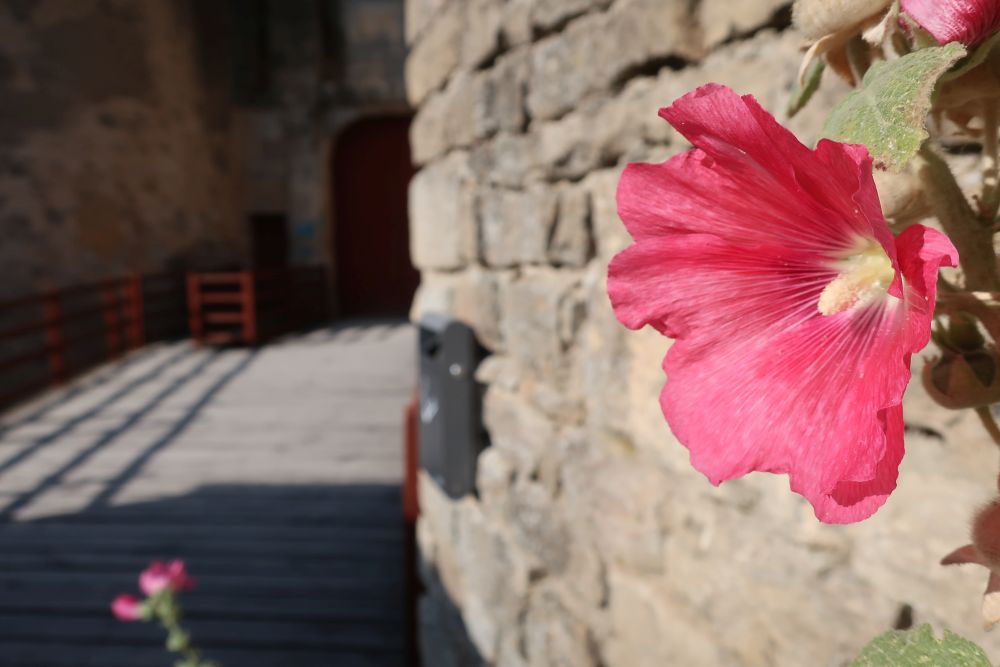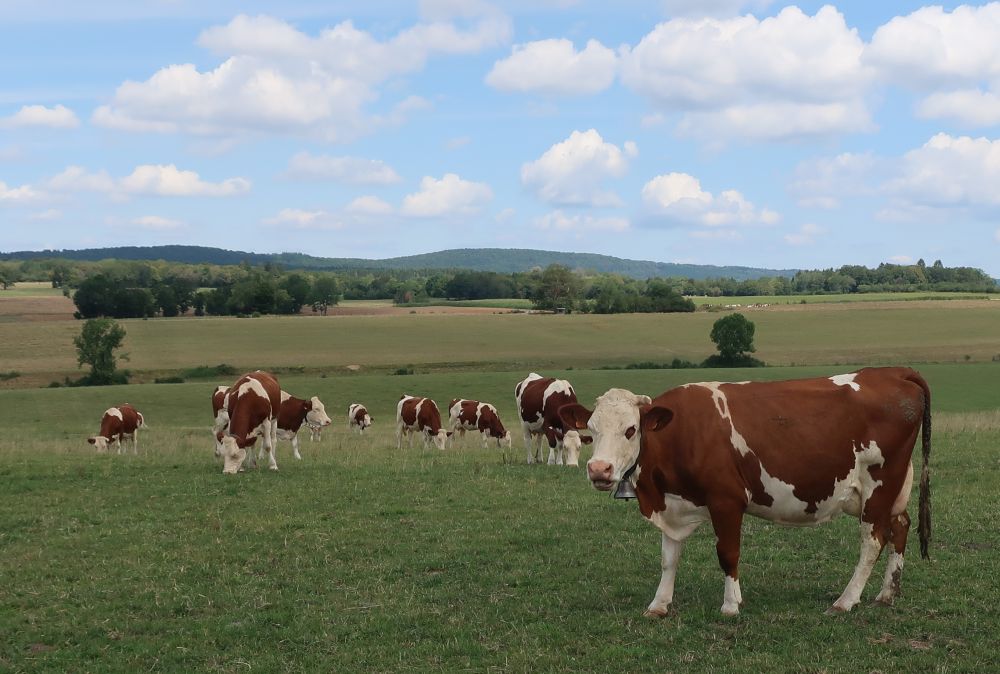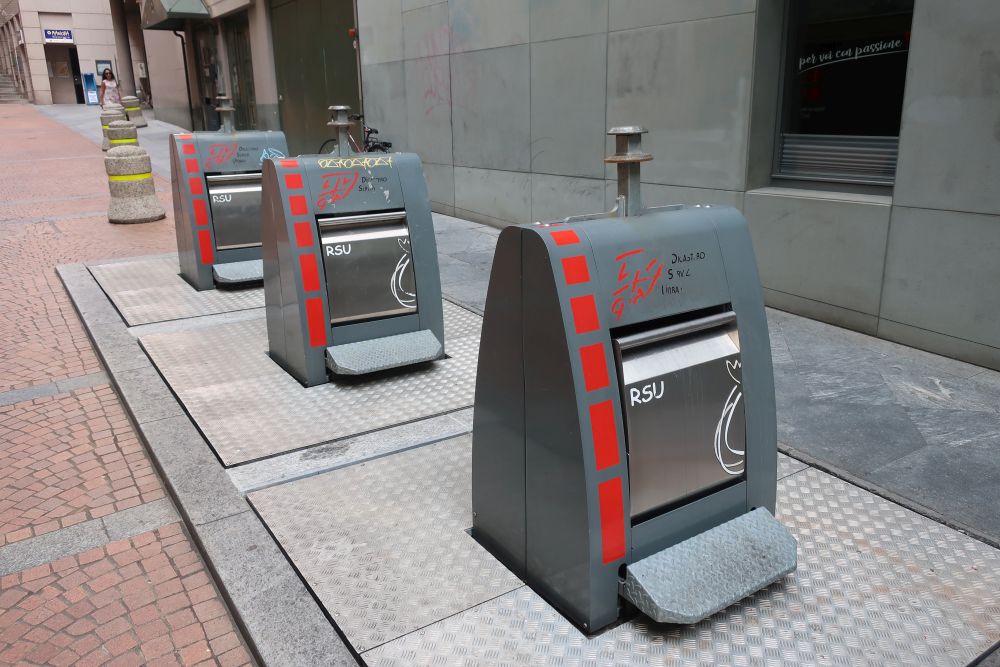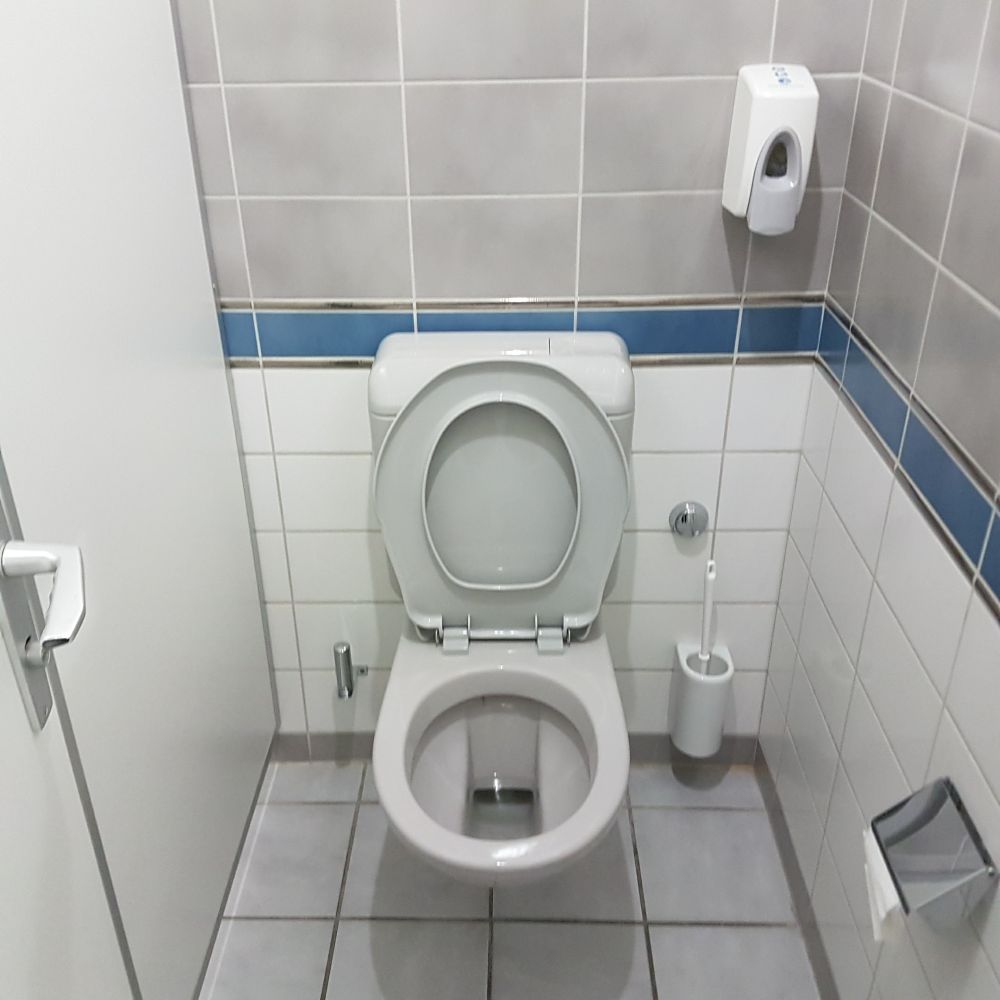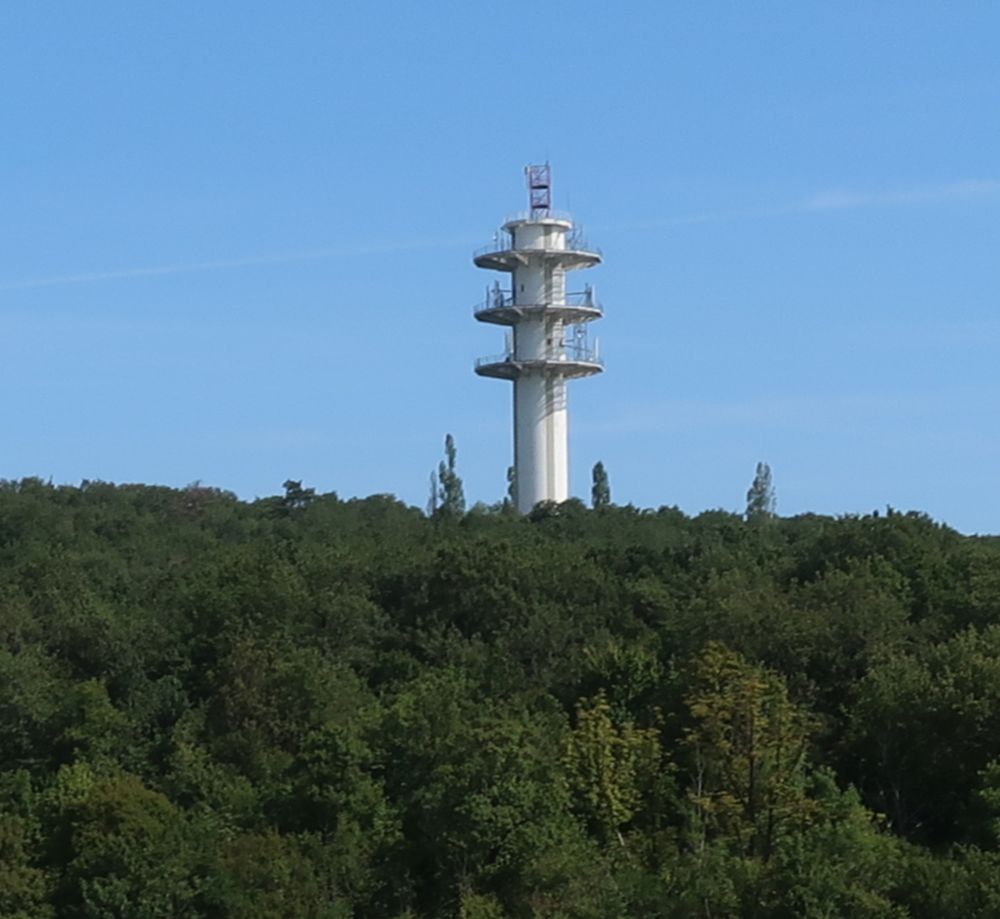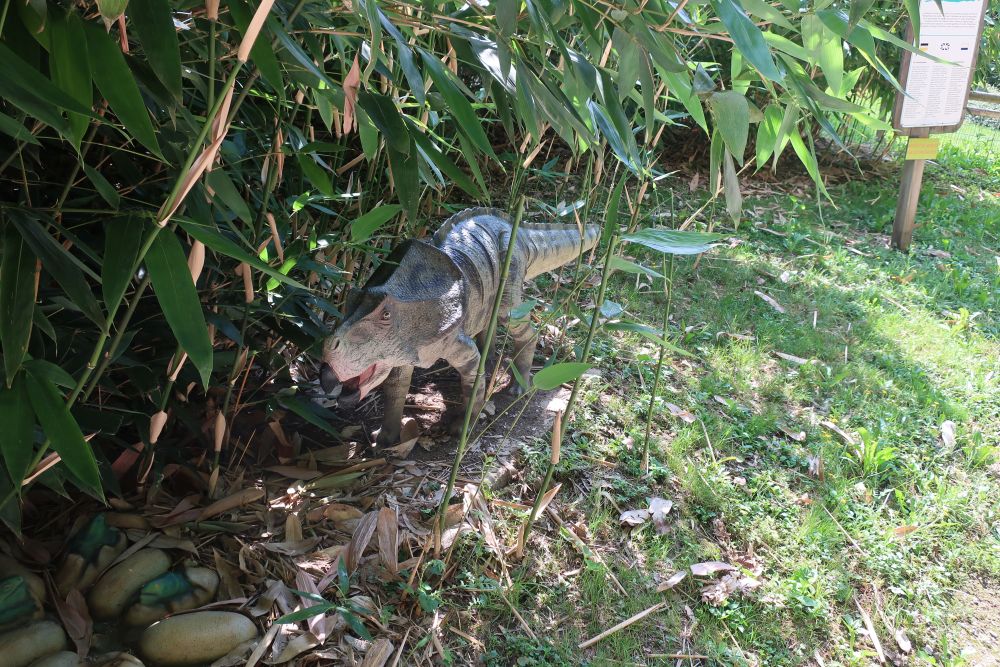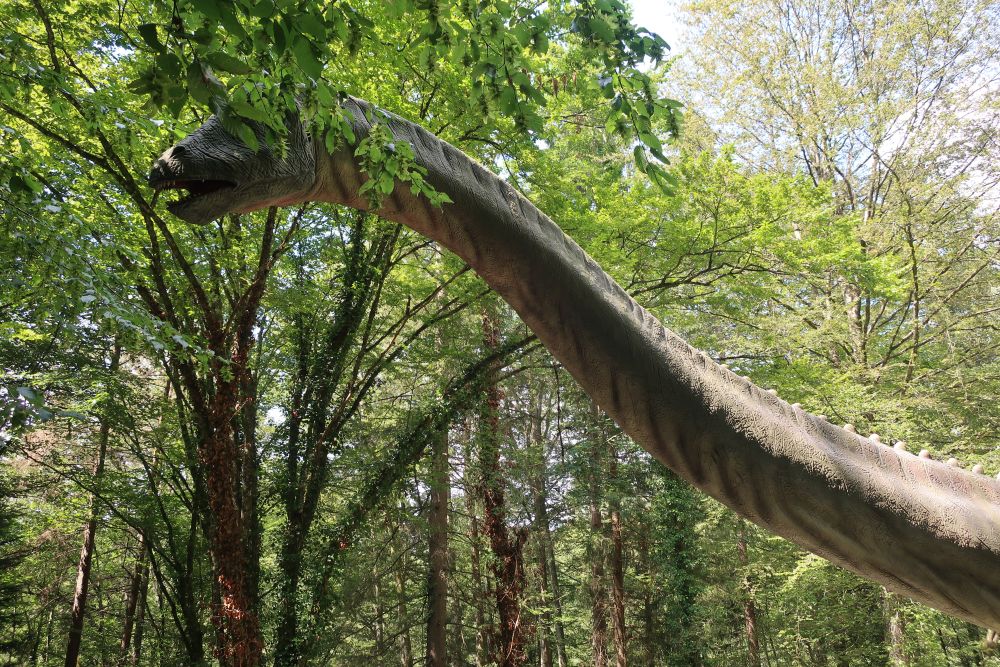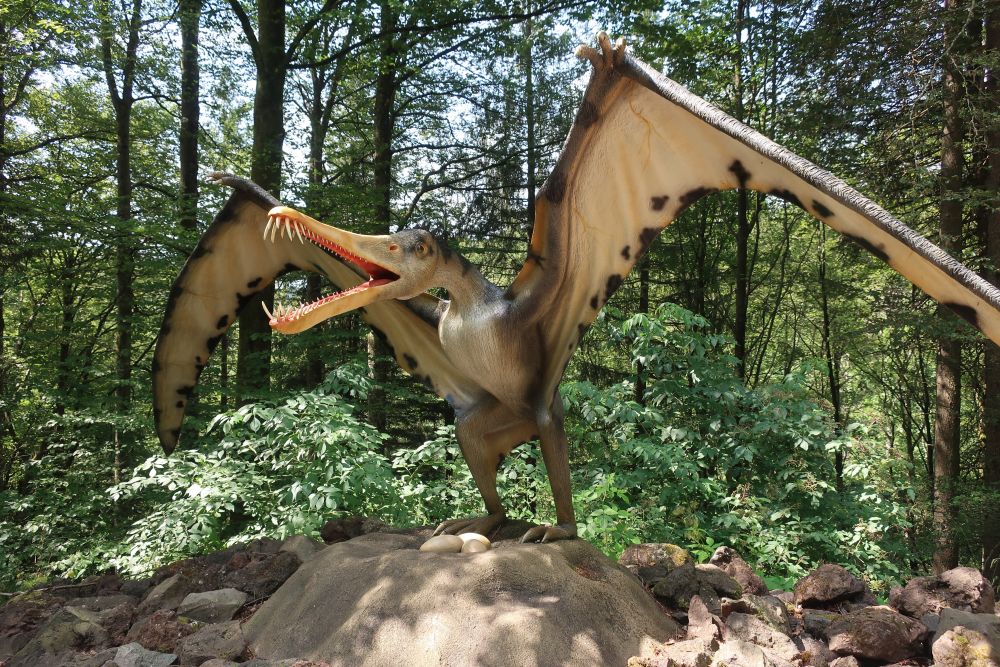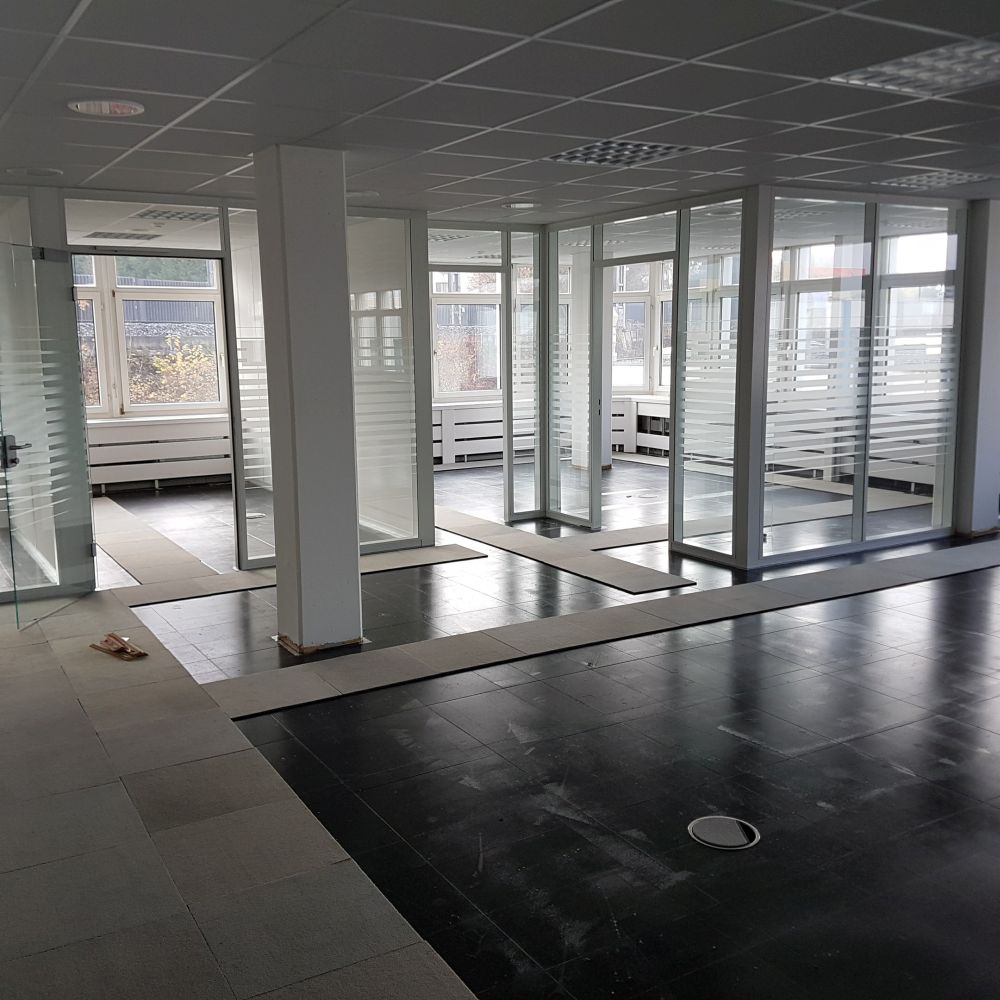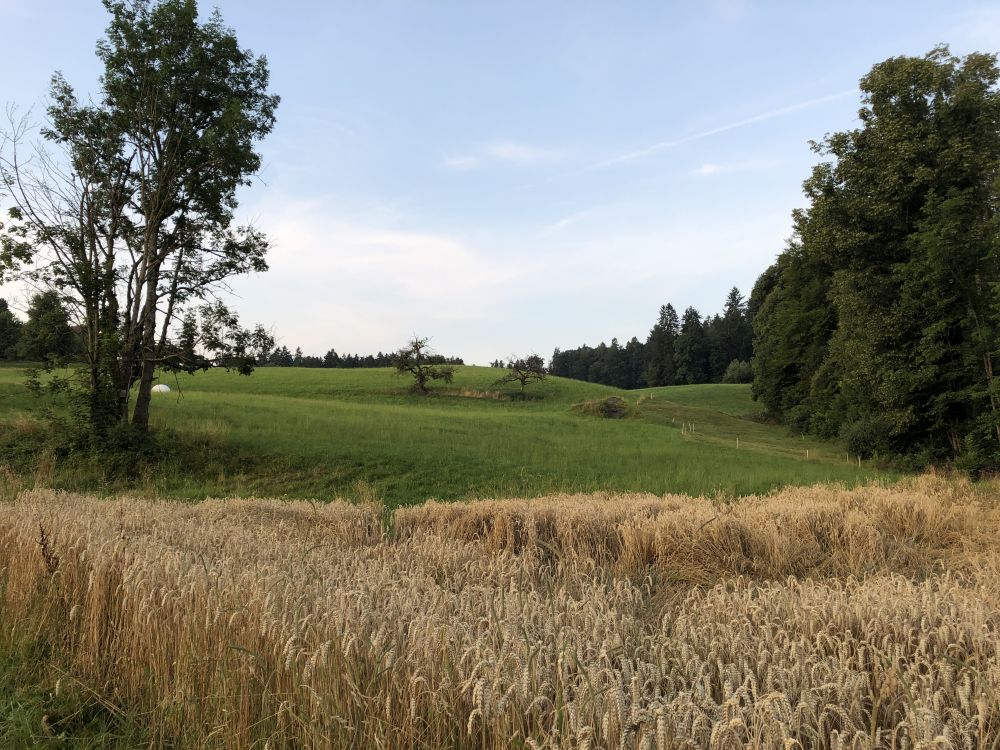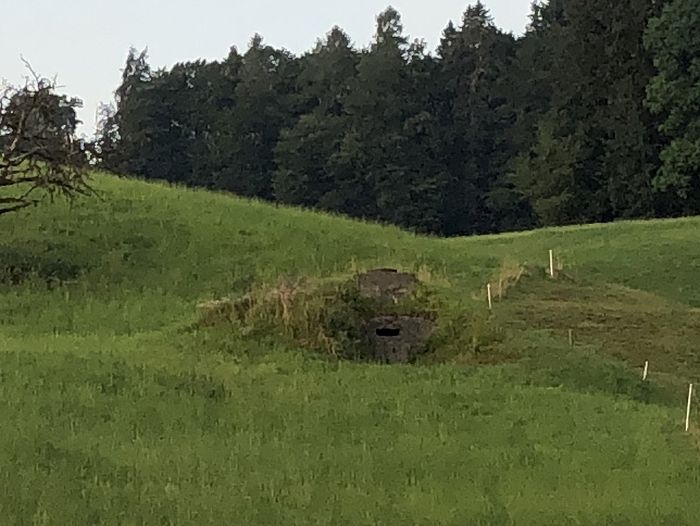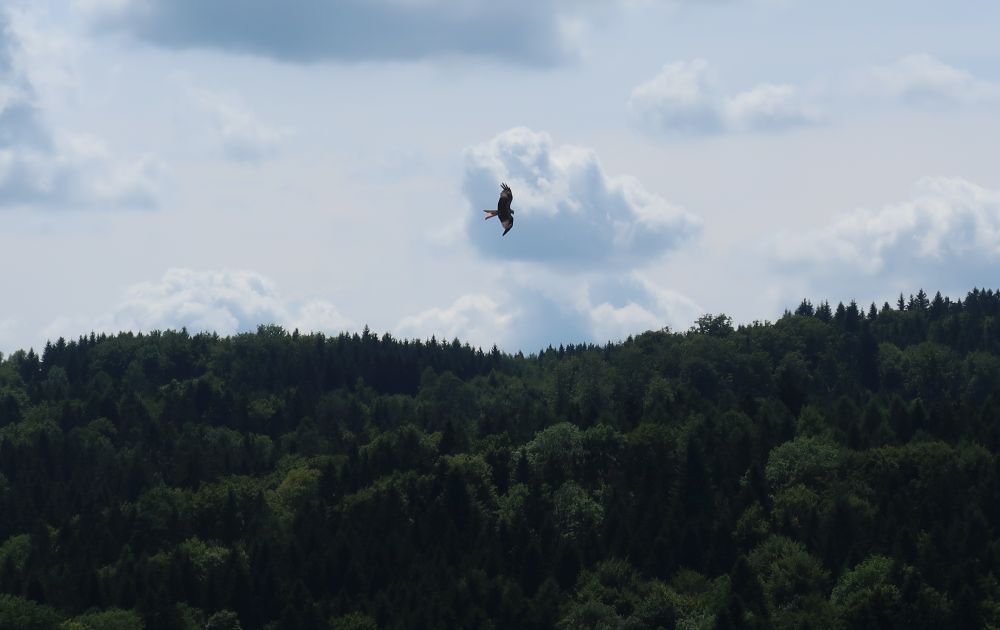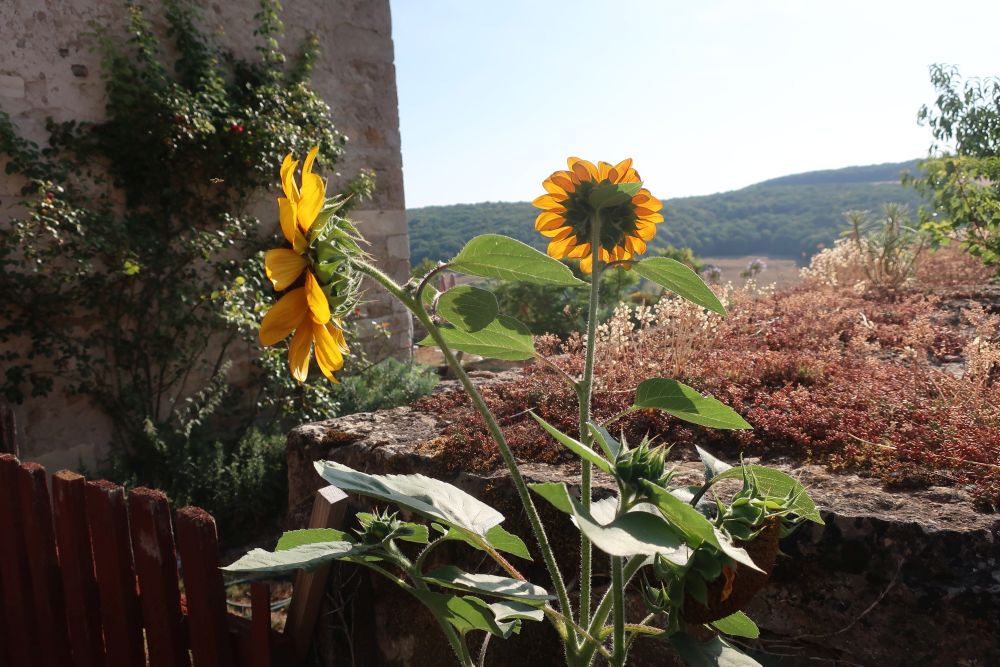This little island in the Italian Laggo Maggiori has a population of 25:
Month: August 2019
Newest addition
The little banjo below on the left is my newest acquisition!
My Deering Calico (on the right) is a professional level instrument, but it‘s loud and weighs in at around 5 kg. In fact, most non-experts are always surprised at the weight, but a banjo like this sports a so-called tone ring – a huge doughnut piece of bell metal that weighs several kgs and that gives the banjo its unique banjo twang.
My new Deering Artisan (on the left) lacks the tone ring and a few other components, so it weighs in at just less than 1 kg.
The main reason for the acquisition is two-fold: For a long time I have wanted a little travel banjo that I could take with me more easily. And this style of banjo is used for a very unique – but extremely challenging – style of banjo music known as clawhammer or frailing, and I thought it was finally time for me to learn!
The amazing Marvin-the-Martian garbage receptacles of France
Continuing the series, this is Marvin the Martian:
Children today might not recognize him as easily as I do, having grown up watching Looney-Tunes cartoons on television. He dates back to 1948.
And Marvin-the-Martian is what I always think about when I see these garbage receptacles at the rest areas of the autoroutes in France:
Lugano
The incredible wind turbines of Bourgogne
I captured this breathtaking snap of wind turbines nestled deep within the Bourgogne countryside of France. It is a bit misleading, because when you get up close you realize how truly large and monstrous these wind turbines are:
If you’ve been to France, then you know how it is. There are literally thousands of wind turbines all over the country. I could not find the data for 2019, but in 2015 France had a total of 5’956 turbines.
Breathtaking Goldau in Arth
A lot of people I know call it Arth-Goldau, but I think technically that’s the name of the railway station! The village in this snap below is Goldau, and it is pretty much smack dab in the center of a region called Arth.
Regardless or irregardless, it’s the Swiss countryside at its summertime best!
North shore of Lake Constance
Lake Constance – or the Bodensee, in German – is really a lopsided place. It separates Germany (in the north) from Switzerland (in the south). Because Germany generally lacks big lakes, the North Shore of the Bodensee has become a quite affluent area for Germans. But because Switzerland generally has spectacular lakes (and the Bodensee is not one of them), the South Shore of the Bodensee is not only undeveloped but in fact real estate here is comparatively inexpensive for Switzerland. Here is a view of the north coast:
Udaipur Yak
A very special oblique, unique fountain of motion in Winterthur
For this next attraction you have to go deep into Winterthur – very deep indeed, to a part of Winterthur that I think few tourists have ever seen or likely ever will.
With the Swiss being very proud – and rightfully so – of their thousands upon thousands of fountains that provide fresh spring drinking water, it is surprising you don’t see more things like this:
There is a small wheel that is turned by the water, causing the little metal blacksmith to bend back and forth and – believe it or not – hit his hammer on an anvil, giving a nice little chime.
Red kite over the rotary rake
Continuing the series, here a huge red kite is looking for a quick snack high over a farmer turning his cut grass with a rotary rake:
Winterthur panaroma
The colors of Jaisalmer
Just a snap that I thought was pretty, with ladies dying the long fabric that the men of Rajasthan wrap into large turbans:
I’ve seen sights like this all over Rajasthan, and what I always find amazing is that neither the streets nor the ladies clothes are covered with red dye, so they must carry out this work with an abundance of talent.
Journey to the Center of Lugano
One of my all time favorite movies is the 1959 Journey to the Center of the Earth, starring Pat Boone and James Mason, based on the book by Jules Vernes:
My recent Journey to the Center of Lugano could not be compared to this at all!
Lugano is a wonderful city on a pretty lake in the Italian speaking part of Switzerland known as Ticino.
When you come to Lugano by train, you’ll either alight (if you are British) or get off (if you are American) at this incredible train station:
Then you’ll immediately walk outside, at which time, upon realizing that you, in actual fact, are hundreds of meters high above the city, you will either say “My word!” (if you are British) or “My goodness!” (if you are American):
At this point it will dawn on you: you are way up here, and the city is way down there. Arithmetically, you have to add the two ways, and that is a loooong way!
So to get ready for this loooong way, in time you’ll either gird your loins (if you are British) or get ready (if you are American) and start the long, long trek down into the city.
Well, that’s what I used to do, many many times – until I made a stunning discovery! Even though I am an American, I am a loin girder, and to properly gird my loins for the long, long journey down I decided to walk back into the train station to buy a bottle of acqua in bottiglia.
And you can imagine my surprise when I saw this stunning sight!
Yes, it’s a contraption! But not just any contraption, this is a people-mover of sort of contraption that shuttles people up and down the mountain!
It was a beautiful day, I felt fit and strong, I needed a good walk – but I decided to throw caution to the wind and try out this contraption. What use is a contraption that nobody uses!
Well, here is a shot of what it looked like as this fully automated contraption was lowered down the mountain on railroad tracks but tied to a huge cable underneath:
Now, I have been on contraptions like this all across Switzerland, so I was ready – I was prepared – I knew exactly what to expect. A very important principle in experiemental physics is this: opportunity favors the prepared mind.
So I had my little point-and-shoot camera out, and I was ready for what I knew what would come next!
But in case you don’t know, in fact these contraptions have two cars that are each at opposite ends of a very long cable, so that as your car is lowered down, another car is raised up:
The rest, as they say, is history. Despite being am American loin girder I did not alight at the bottom but rather got out and continued on my way.
Here’s a nice shot of what the shoreline of Lugano more or less looks like:
And when I was there the city was filled with shiny metallic works of art, such as this one below that, at first glance, looks like a hole in the fabric of space and time:
Châteauneuf-en-Auxois Flowers – 5
Continuing the series, here are more flowers I spotted while walking around the medieval village of Châteauneuf-en-Auxois deep within in the Burgundy country of France.
When I see a sight like this – something very pretty adorning what was once a military fortification, it always drives me crazy! I incessantly wonder when and how something militaristic was transformed into something nice, and whether the transformation came suddenly or rather just little by little. A good example is my blog post entitled From war to peace.
Doubs Cows
Garbage in Lugano
Continuing the series, here are some stunning waste receptacles that I spotted in the southern Swiss city of Lugano,
One of the first reactions I have is buck the trend. There is a trend in the world today – and for some time – to replace well-built, long-lasting products with cheap and disposable ones. You see this trend in almost every aspect of life. So when you see this new trend to replace short-lived garbage receptacles with better built and more longer lasting fixtures, it is a step in the right direction!
Châteauneuf-en-Auxois Flowers – 4
Continuing the series, here are more flowers I spotted while walking around the medieval village of Châteauneuf-en-Auxois deep within in the Burgundy country of France.
I took this snap early in the morning, literally laying on my stomach on the ground. I probably would not have tried that later in the day with more people around, or they might mistake me for a real photographer!
Breathtaking Bourgogne gate
The Burgundy countryside of Bourgogne in France is an incredible, is an amazing, incredible place. You’ll find many dozens of kilometers of walls of stone, like this one:
Since there isn’t a lot of square stones laying around on the ground, it really begs the question of the absolutely tremendous effort it took to quarry the stone and transport it to create the walls.
One of my favorite projects – 3
Continuing the series, as part of a large IT transformation that I helped drive, it was necessary for us to hire 20+ talented IT professionals. And add to that around 30 mostly Indian colleagues that were to join us to run the Transition and Transformation (T&T) program. And add to that at least two other large IT teams we wanAnd because we had so many people, it was necessary for us to locate and rent a building dedicated to IT. So I had a once-in-a-lifetime opportunity to take off my IT transformation hat and put on my facilities management hat.
This blog series recollects a bit of the journey before too much time passes and I forget some of the more interesting details.
Ongoing third parties
I’ve worn a few different hats in my life: cook in a restaurant, forklift truck driver, landscape gardener, and professional housepainter to name just a few of the most important ones. So it is not only fun but a privilege when life gives me the chance to establish working relationships with people in varied trades.
One of the most fun people I dealt with was the head of the cleaning service company we contracted. I won’t mention her name here, but anyway she is retired. She was around six-foot five feet tall, and when she first shook my hand she literally crushed it (no kidding, I could not play the banjo that day!). She was from Stuttgart – and I lived many years in Stuttgart – and if you know anything about the passions of the people Schwabia – and I am saying this because they are great people – then you know that quite probably cleaning is the only topic more important on their scale of life than finance or even religion!
I learned a few things about cleaning.
One thing I learned, the cleaning contract is built around a very specific checklist or work to be done (wipe desk tops with damp cloth, clean outside of refrigerator, complete vacuum of carpet, spot vacuum of carpet for visible dirt, etc.) and how often each step is to be done (daily, weekly, monthly, on demand) and when (e.g. after working hours).
I also learned that after the contract was signed, at least in my case, the cleaning company assigned a dedicated resource to handle our cleaning needs. I hardly ever saw her, because she I don’t think she came to building until around midnight. And I also learned that she took a lot of pride in her work and very often cleaned up even when it was not clearly written in the contract.
I also learned that we had an obligation to provide a rather large room to store the cleaning materials (I never consider this when I did my original planning!). Think about it: vacuum and mop. But you’ll need a huge shelf space for the cleaning products and chemicals, as well as the consumables. Believe me, there are many, many more consumables than you might first think about!
And finally, the little stuff. Like most people, I’ve used toilets all my life, maybe not always exclusively, but usually when I had the chance and the need! Also living in Asia I became rather proficient at Asian style squat toilets.
But in addition to my role to help drive the IT Transformation, I was as a facilities manager now, the and toilets were my responsibility, and this means all of them, both men’s and women’s (and the shower).
Now here are a few things you might not think about in this snap:
Think a little bit about the consumables. The little white dispenser is for alcohol – this needs to be discussed with the cleaning company, and you’ll need a part in your contract about how often its checked. And the other consumables – and there are more of them than you think: sanitary products, bags, toilet paper, soap, paper for drying your hands, bags to line the towel basket, bags to line the waste basket – and a few more I’ll let you figure out yourself!
And although it’s not shown here, the restrooms contained a spray bottle of a scented fragrance that periodically (few times a day) shot a burst of fresh scent into the room: which scent would you like? How often should it be checked? How often should it spray? Who checks that it sprays and who replaces the little battery when it‘s needed?
These were just a few of the challenges you face when you are a facilities manager! It’s a bit overwhelming at first, but as time goes on you start to take these things in your stride!
The incredible, unbelievable transmission towers of France
Well, I don’t know how incredible they really are.
But I do know it drives me absolutely nuts to see an almost identical set of towers all over the French countryside, and yet not know where to get the details. Are they for radio – or television – or both? Why are there three platforms? Why is the central pillar so large?
The incredible dinosaurs of Charbonnières-les-Sapins
The tiny village of Charbonnières-les-Sapins is nestled so deep within the Doubs department of the Bourgogne-Franche-Comté region of France that it is likely no tourists have ever been here – or ever will.
But if you do make it here, which itself would be an amazing feat, you still have a long, long way to go. For deep, deep within the forests adjacent to Charbonnières-les-Sapins lies a truly incredible park, La Parc Prehistorique, filled with dinosaurs!
But let’s please get one thing straight: these are not real dinosaurs! The real dinosaurs died out a long, long time ago. These are just models of dinosaurs.
OK, now that you know these are not real dinosaurs, you can really enjoy the park, because they’ve gone to incredible lengths to show what it would be like if there really were real dinosaurs in the forest.
Some of the models are quite good, such as this one:
Most of the models really make dinosaurs seem real, by portraying them as they might have been in life – this enormous giant below is scratching his back:
But some of them are a bit more cheesy:
There may be a big question that pops into your mind: why a dinosaur park here? As I’ve highlighted several times in my blog, the mountains of this region are the Jura mountains, the namesake of the Jurassic period. Even today there are zillions of fossils just laying around and waiting to be discovered by paleontologists brave enough to venture this deeply into France.
One of my favorite projects – 2
Continuing the series, as part of a large IT transformation that I helped drive, it was necessary for us to hire 20+ talented IT professionals. And add to that around 30 mostly Indian colleagues that were to join us to run the Transition and Transformation (T&T) program. And add to that at least two other large IT teams we wanted to co-locate. And because we had so many people, it was necessary for us to locate and rent a building dedicated to IT. So I had a once-in-a-lifetime opportunity to take off my IT transformation hat and put on my facilities management hat.
This blog series recollects a bit of the journey before too much time passes and I forget some of the more interesting details.
Negotiating the lease agreement
No photos here. The negotiations about rent were a nice learning experience for me. At least in this area of Switzerland the value of the building is tied to the rental price, so the owner was absolutely unwilling to lower the rent. However, that does not mean we could not negotiate: we discussed how many months “rent free” we would get. This included not only the building itself, but the parking spaces adjacent to the building. As well as other topics, such as the needed paint, carpets, small cosmetic repairs, upgrades to the kitchen, and the like.
I also thought the negotiations had a somewhat detached and less emotional character than I had expected. The building was in fact owned by a large company that owns buildings, so the passions that I somehow expected after dealing with normal landlords and rental agencies in Europe were not there. As Michael Corleone said, “Nothing personal, it’s strictly business.”
Finally, the terms and conditions (in German: Allgemeine Geschäftsbedingungen): they were straightforward, and the procurement specialists of my company did not insist upon any changes. Probably the whole contract was no more than 15 or 20 pages, tops. What we key for us, however, were the termination clauses and exit conditions, since my company was considering a general consolidation of all offices in Switzerland into a central location.
What was also part of the contract is how and how often the exterior of the building would be cleaned. Most buildings in Switzerland have windows that are covered with louvers, and these get dirty and need to be periodically cleaned.
One-Time Third Parties
There were two categories of third party providers I was involved with: one-time, and ongoing.
The most important one-time third party was an electrical company that I contracted to finalize all the needed power and LAN cable hook-ups. The building floor was elevated, so this meant snaking the cables to holes located under what would be the future desks.
Here’s a nice snap that shows one of the holes:
This was an interesting experience for me. It was a true learning moment – and if you are new to this business, maybe you can learn from it too?
Together with Christian (see my last blog series) we contacted three different electrical companies in order to get competitive offers. Each of them sent an extremely experienced person for discussions with us and to collect our requirements. This gave me – still very naive in these areas – a pretty good feeling of confidence.
But . . . after we made our selection and the installation crew showed up, it was an entirely different situation! First, we weren’t sure exactly which language the crew spoke, but it was neither German nor Swiss German nor English nor any other languages we knew! This is not an exaggeration by any means – we were completely unable to communicate with the crew except by using hand signals. Thankfully, our hand signals for “what the f–k are you doing???” and “get the f–k out of our building” are international in nature and gladly, were immediately understood and acted upon.
Second, even after breaking through the communication barrier, we realized we’d get the best results if we managed them quite closely. Much, much more closely than I wanted to do – but I thought back to the inputs that a real building renovation project manager gave me sometime earlier, and this seemed to confirm to me a close approach was the right one! If my efforts here would have been greater, than I would have escalated back to the company itself – but when the end is in sight sometimes the direct approach is ultimately the easiest.
Finally, the topic that Americans refer to as “sweat equity,” or saving a lot of money by doing some jobs yourself. We determined we could save an enormous amount of costs by doing a significant chunk of the work ourselves. For it was necessary to snake LAN cables to each of the holes under what would be the desks, and this requires an incredible effort to label the cables. It’s not an effort that requires the experience and training of an electrician, so by doing this ourselves we saved four figures of cost!
Paint and carpet
I did not have any big efforts here, as the painting, minor bugfixing, and carpet installation was contracted by the building owners.
Here you can see a snap after the carpet was laid and the walls were painted:
I did have a bad experience, however, and I hope other people can learn from my mistake. It turns out that whatever combination of carpet, carpet glue, and paint were used, it left an intense smell in the building. Fortunately, the planned move in date was nearly six weeks after this work went done, so I simply opened all the windows and vented the building 24×7, which removed the problem nicely. Nevertheless, after opening, there were a few colleagues that suspected we had a case of “sick building syndrome.” Sadly, it was never easy to verify this claim, since the building itself was located just a few dozen meters from a chemical factory.
Pretty tame so far, but just wait for future blog posts when I tell of the amazing adventures that were in store for me!
Amazing Swiss bunkers
The Swiss set out to fortify Switzerland long before World War II. To me that’s always been a very apt and fitting closure of the circle of fate, because – before the introduction of the long bow – Switzerland had the best and most well-trained soldiers and mercenaries in the world. Probably, more lives have been lost in medieval battle at the hands of the Swiss than many other kingdoms combined.
Here’s what I see everyday on my long 15 km Nordic Walk through the Winterthur countryside:
But here’s what it looks like if you really zoom in:
That’s a bunker. You can’t see it in the snap, but it is situated in the hills high above the village of Winterthur, and the holes are pointing directly down into the village.
There are many, many tens of thousands of bunkers and fortifications all over Switzerland – so I’ve never really been inclined to start a blog series to photograph them. Just like a few others, this one just caught my eye.
Amazing Red Kite over the skies of Winterthur
Took this snap from my balcony using the telephoto lens on my little point-and-shoot camera. That’s a red kite (Milvus milvus) that lives near my building, and for over three years now cruises around looking for pigeons and crows to eat. (In fact, I always know he’s out hunting when the zillions of crows somehow disappear.)
Interestingly, the area in which I live is almost entirely devoid of tiny birds, only massive numbers of crows, so I’ve often thought that probably the crows have pushed out the other birds.
Châteauneuf-en-Auxois Flowers – 3
Continuing the series, here are more flowers I spotted while walking around the medieval village of Châteauneuf-en-Auxois deep within in the Burgundy country of France. These flowers were high in the village overlooking the Bourgogne countryside.
For me it is a deeply emotional scene, with the flower on the right looking longingly at the French countryside, somehow wishing it could go down there but not being able to.
I’m actually not a very big fan of flowers per se – but I am trying to understand the in’s and out’s of the aperture setting on my little point-and-shoot camera, which makes the foreground image very sharp, but the background very blurry. I’ve had the camera for around two years now, and it was always on my to-do list to figure it out!



